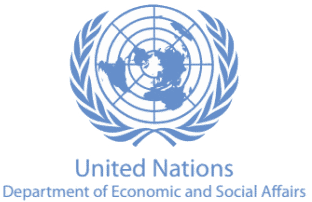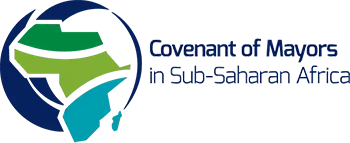Integrating Job Creation
Issue
Job creation is an urgent imperative worldwide, and especially critical in Africa given the demographic boom and extremely high levels of unemployment.
Solutions
Historically job creation and infrastructure go hand-in-hand. Over decades worldwide, infrastructure projects and programmes have been developed with the explicit objective of large-scale catalytic job creation. In one single project, jobs are created at the project level (direct jobs), supplier level (indirect jobs), from the use of income earned from direct and indirect workers (induced jobs), and from the economic spill-over effects of infrastructure services such as energy, transport, internet and communication services (secondary jobs). In fact, over decades national and subnational governments of developed countries, including the United States, Europe, and Asia (notably China), have implemented industrial policies that boost job creation through the requirement for local contractors, materials, and workers.
The on-line PIDA Job Creation Toolkit was developed by GlobalDF for the African Union Development Agency NEPAD with the support of the German government as a tool designed to maximize African jobs resulting from the preparation, construction, and operation of Africa infrastructure projects. Project Owners, technical partners, and government policy makers can estimate the total job impact from their projects (including indirect, induced, and secondary jobs) and think through ways to increase the number and quality of African jobs.
The Interactive Map on the Job Creation Toolkit shows estimated jobs created by PIDA and other infrastructure projects in Africa. Use filters below to see total job estimates for specific types of projects or individual countries. Results by country or project appear under the filters, sorted by total job years. The map shows the relative number of job years for each country. Countries included in a filter are highlighted in red. Roll over a country to see more details. For the most detailed information on specific projects, click on the project link to see the project’s Job Estimate Report.
Map to be filtered by Filter map by Project Phase, Economic Impact, Project, Sector, Country or Regional Economic Community

To access the Interactive Map, click here
1. Overview of Job Creation Interventions
2. The PIDA Job Creation Maximization Guide
3. View Toolkit Public Information
All Toolkit published information is open to the public.
4. Use Toolkit to Estimate Jobs
To use the Toolkit to estimate jobs, you need to register with AUDA-NEPAD and agree to the Terms & Conditions.
Details on Solution
1) The PIDA Job Creation Maximization Guide
The Toolkit’s Maximise Jobs Module provides a “job lens” of possible interventions and actions steps that could be used to develop, finance, and operate African infrastructure projects joining the twin priority goals of: (1) delivering on African infrastructure and (2) increasing the impact of infrastructure on African job creation. Both goals are of utmost political and economic importance: Increasing African jobs can work hand-in-hand with the accelerated development of investable African infrastructure assets that meet the investment criteria of private sector investment (including institutional investment).
Access guide, examples and resources
10 Job Maximization Actions
ACTION 1: Develop African Infrastructure Skills
ACTION 2: Implement a Project Social Impact Management Plan
ACTION 3: Create a Project Local Content Policy
ACTION 4: Selectively Implement Labour-Intensive Methods
ACTION 5: Require Project Procurement Programmes to Use Local Suppliers
ACTION 6: Focus National Procurement Policies on Youth & Gender
ACTION 7: Launch Sector Investment Programme with Local Content Requirements or Incentives
ACTION 8: Implement Tax Incentives to Increase Local Content
ACTION 9: Adapt & Scale Educational Programmes
ACTION 10: Crowd in Investors that Prioritize African Job Creation
2) Toolkit Public Information
The website provides information on best practices, job estimates for selected practices, and an interactive map providing details on estimated jobs for the three main phases of projects: development phase, construction phase, and operational phase. The estimated secondary job estimates resulting from the improvement of the environment are also included. Users can filter job estimates by country, regional.
3) Methodology for Developing Job Estimates
The PIDA Job Creation Toolkit is designed based on best practices, as summarized below:
- Uses National Input-Output Tables, leveraging decades of job estimation approaches used worldwide by multilateral organizations (e.g., World Bank, OECD, etc.) and governments of both developing and developed countries
- Includes Full Spectrum of Job Creation:
- Direct jobs (jobs created by the project)
- Indirect jobs (jobs created by suppliers to the project)
- Induced jobs (jobs created by spending of direct and indirect workers)
- Secondary jobs (jobs created as a result of the economic impact of the completed project, such as increased access to energy and transport)
- Includes Job Creation over Life Cycle of Project: Covers the useful life of the project (i.e., until the project is estimated to stop operating)
- Provides Labor Market Information: Breaks out project job estimates by main occupational categories for planning of skills development & education programs
- Serves as Advisory Tool for Job Creation Interventions: Provides Policymakers, Project Owners, partners and other stakeholders with range of job maximization policies, programs, processes, etc. with case study examples and resource links
4) Use Toolkit to Estimate Jobs
To use the Toolkit to estimate jobs, you need to register with AUDA-NEPAD and agree to the Terms & Conditions.
Invitation to Partner
GlobalDF invites interested parties to help refine and apply specific technical interventions and tools that can increase the quantity and quality of jobs resulting from infrastructure projects. Please contact us by clicking here.




